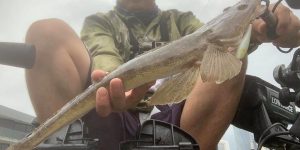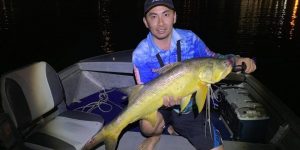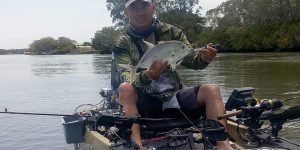What are some features to look for in a fish finder?
Buying a fish finder can be an awesome idea, especially if you do a lot of fishing. For example, if you are going out to fish on the sea, then using a fish finder can help you determine where to best cast your line. But since there are a lot of different models of fish finders out there, how do you find the right one anyway? If you want to find out, here are some considerations when buying a new fish finder.
First and foremost, you have to be clear about what you want. If you buy the wrong fish finder, you could potentially lose up to a few hundred dollars. Is it enough for you to recognize the depth and the bottom of the ground in order to find suitable hotspots? Or should it be a little more, such as the detection of underwater strata, obstacles, the soil, the water flow or even detailed and accurate silhouettes of the target fish? If you want a fish finder that can handle all of those specific needs and more, then there are a few features that you need to take a closer look at. Here are some of the particular features that you should pay attention to when you are shopping to find the best fish finder around.
CHIRP Enconcer
CHIRP is the sonar technology that fish finders employ. Having a better chirp transponder means better fish identification. At individual frequencies, fish can only be recognized as individual fish at some distance from each other. CHIRP makes it possible to display closely spaced fish as individual fish-sickles.
Price
Pay attention to the price of the fish finder. Obviously, you will need to be very careful about which one you buy based on the price that it is sold at. Try to find a fish finder with a good price to feature ratio.
GPS map function
Only with a map on the fish finder, you can find and mark the best fishing hotspots. Many proprietary map features record the depth during the ride and give a fantastic new overview of sloping edges and underwater hills and other strata. GPS features increase safety, especially during the worst fishing times, when dark clouds gather. Those who can afford GPS and a nautical chart should invest this money.
High-contrast, high-resolution display
You need a lot of contrast on the water in the bright sunshine. Otherwise, nothing is recognizable and the sounder is useless. The size and resolution of the display are responsible for the detailed representation. A good fish finder provides many details and the display it has must be able to clearly show what is underneath the water.
Cone Angle
A cone angle that has got a wide opening makes it easier to detect various obstacles and get clearer imaging of objects underwater. Alone the narrowest possible opening angle makes it possible to recognize the true soil structure underwater reasonably and to find soil depressions.
Portable vs Fixed
Depending on your fishing style, you will need to decide whether you want a portable fish finder or one that is fixed to your boat or kayak. If you do a lot of fishing in rental boats, or other peoples boats, then a portable unit would be the way to go. There are many portable fish finder kits on the market from all the top brands. Wifi/Castable fish finders have also recently become popular. They are ideal for landbased anglers who don’t have access to a boat. For boats and kayaks, consider a fixed fish finder where the transducer is mounted at the rear of in the hull of the boat or kayak.
These are just some of the features that you will need to look for if you want to buy a new fish finder!





